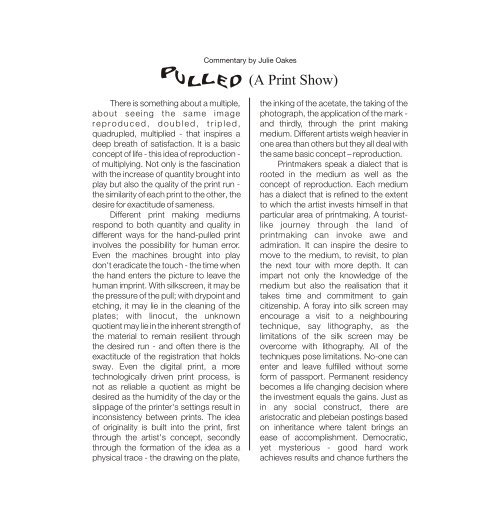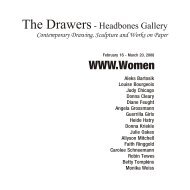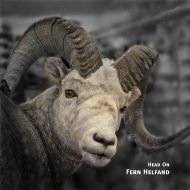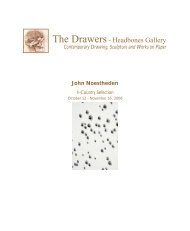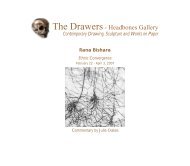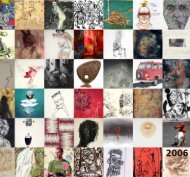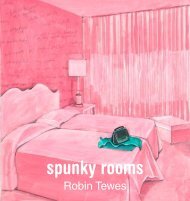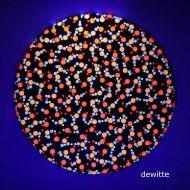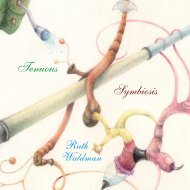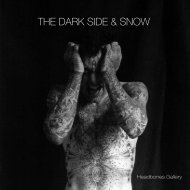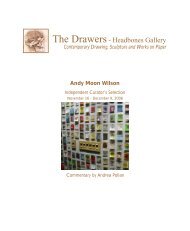Pulled Cover - Headbones Gallery
Pulled Cover - Headbones Gallery
Pulled Cover - Headbones Gallery
You also want an ePaper? Increase the reach of your titles
YUMPU automatically turns print PDFs into web optimized ePapers that Google loves.
Commentary by Julie Oakes<br />
PULLED (A Print Show)<br />
There is something about a multiple,<br />
about seeing the same image<br />
reproduced, doubled, tripled,<br />
quadrupled, multiplied - that inspires a<br />
deep breath of satisfaction. It is a basic<br />
concept of life - this idea of reproduction -<br />
of multiplying. Not only is the fascination<br />
with the increase of quantity brought into<br />
play but also the quality of the print run -<br />
the similarity of each print to the other, the<br />
desire for exactitude of sameness.<br />
Different print making mediums<br />
respond to both quantity and quality in<br />
different ways for the hand-pulled print<br />
involves the possibility for human error.<br />
Even the machines brought into play<br />
don't eradicate the touch - the time when<br />
the hand enters the picture to leave the<br />
human imprint. With silkscreen, it may be<br />
the pressure of the pull; with drypoint and<br />
etching, it may lie in the cleaning of the<br />
plates; with linocut, the unknown<br />
quotient may lie in the inherent strength of<br />
the material to remain resilient through<br />
the desired run - and often there is the<br />
exactitude of the registration that holds<br />
sway. Even the digital print, a more<br />
technologically driven print process, is<br />
not as reliable a quotient as might be<br />
desired as the humidity of the day or the<br />
slippage of the printer's settings result in<br />
inconsistency between prints. The idea<br />
of originality is built into the print, first<br />
through the artist's concept, secondly<br />
through the formation of the idea as a<br />
physical trace - the drawing on the plate,<br />
the inking of the acetate, the taking of the<br />
photograph, the application of the mark -<br />
and thirdly, through the print making<br />
medium. Different artists weigh heavier in<br />
one area than others but they all deal with<br />
the same basic concept – reproduction.<br />
Printmakers speak a dialect that is<br />
rooted in the medium as well as the<br />
concept of reproduction. Each medium<br />
has a dialect that is refined to the extent<br />
to which the artist invests himself in that<br />
particular area of printmaking. A touristlike<br />
journey through the land of<br />
printmaking can invoke awe and<br />
admiration. It can inspire the desire to<br />
move to the medium, to revisit, to plan<br />
the next tour with more depth. It can<br />
impart not only the knowledge of the<br />
medium but also the realisation that it<br />
takes time and commitment to gain<br />
citizenship. A foray into silk screen may<br />
encourage a visit to a neighbouring<br />
technique, say lithography, as the<br />
limitations of the silk screen may be<br />
overcome with lithography. All of the<br />
techniques pose limitations. No-one can<br />
enter and leave fulfilled without some<br />
form of passport. Permanent residency<br />
becomes a life changing decision where<br />
the investment equals the gains. Just as<br />
in any social construct, there are<br />
aristocratic and plebeian postings based<br />
on inheritance where talent brings an<br />
ease of accomplishment. Democratic,<br />
yet mysterious - good hard work<br />
achieves results and chance furthers the


